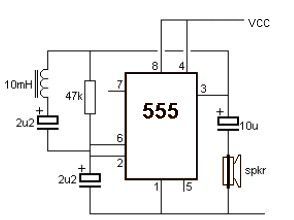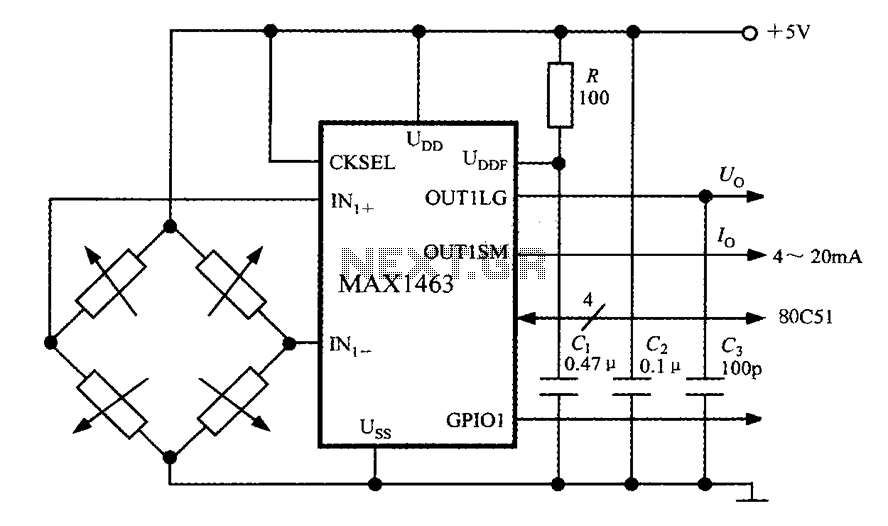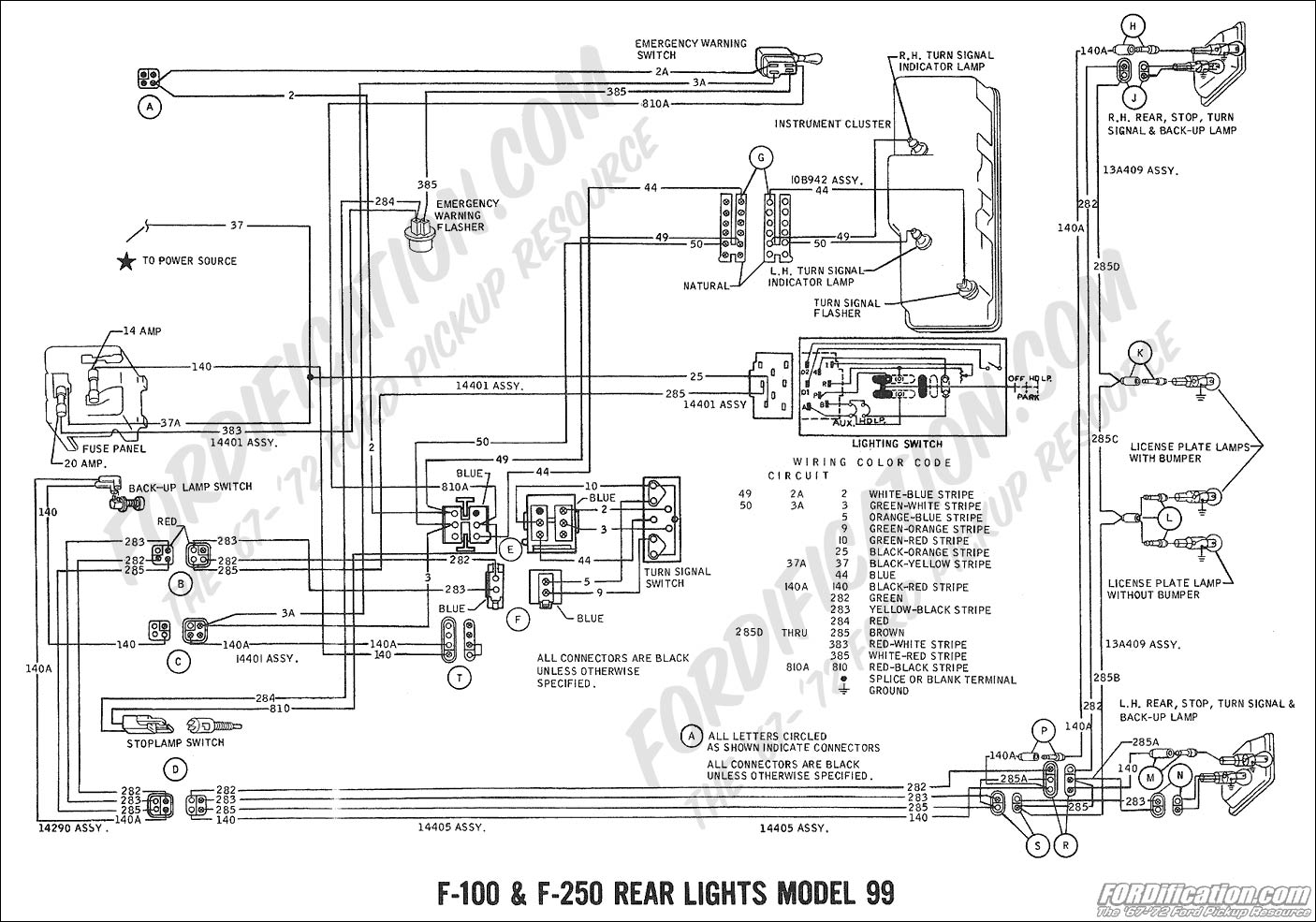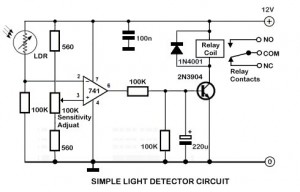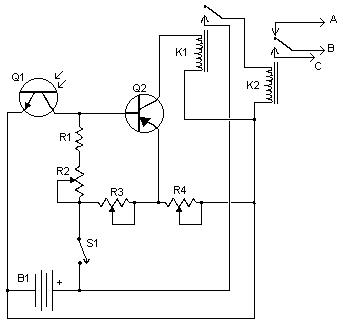
6V Light Barrier Sensor Detector

The following circuit illustrates a Light Barrier Sensor Detector Circuit Diagram. Features include a single transistor, an adjustable potentiometer, and a 6V power supply.
The Light Barrier Sensor Detector Circuit is designed to detect the presence of an object by utilizing a light source and a photodetector. The circuit typically consists of a light-emitting diode (LED) that serves as the light source, and a phototransistor or photodiode that acts as the light detector.
In this configuration, the LED emits light towards the detection area. When an object interrupts the beam of light, the intensity of light received by the phototransistor decreases, triggering a response in the circuit. The single transistor in the circuit functions as an amplifier, enhancing the signal generated by the photodetector when the light barrier is breached.
The potentiometer included in the circuit allows for fine-tuning of the sensitivity of the light detector. By adjusting the potentiometer, one can set the threshold level at which the circuit will respond to the interruption of light. This feature is particularly useful in applications where varying distances or sizes of objects may need to be detected.
The circuit operates at a supply voltage of 6V, which is suitable for low-power applications. The design may include additional components such as resistors and capacitors to stabilize the circuit and filter out noise, ensuring reliable operation.
Overall, this Light Barrier Sensor Detector Circuit is a versatile and efficient solution for object detection in various applications, including automatic doors, security systems, and robotic navigation.The following circuit shows about Light Barrier Sensor Detector Circuit Diagram. Features: single transistor, The potentiometer is adjusted, 6V .. 🔗 External reference
The Light Barrier Sensor Detector Circuit is designed to detect the presence of an object by utilizing a light source and a photodetector. The circuit typically consists of a light-emitting diode (LED) that serves as the light source, and a phototransistor or photodiode that acts as the light detector.
In this configuration, the LED emits light towards the detection area. When an object interrupts the beam of light, the intensity of light received by the phototransistor decreases, triggering a response in the circuit. The single transistor in the circuit functions as an amplifier, enhancing the signal generated by the photodetector when the light barrier is breached.
The potentiometer included in the circuit allows for fine-tuning of the sensitivity of the light detector. By adjusting the potentiometer, one can set the threshold level at which the circuit will respond to the interruption of light. This feature is particularly useful in applications where varying distances or sizes of objects may need to be detected.
The circuit operates at a supply voltage of 6V, which is suitable for low-power applications. The design may include additional components such as resistors and capacitors to stabilize the circuit and filter out noise, ensuring reliable operation.
Overall, this Light Barrier Sensor Detector Circuit is a versatile and efficient solution for object detection in various applications, including automatic doors, security systems, and robotic navigation.The following circuit shows about Light Barrier Sensor Detector Circuit Diagram. Features: single transistor, The potentiometer is adjusted, 6V .. 🔗 External reference
